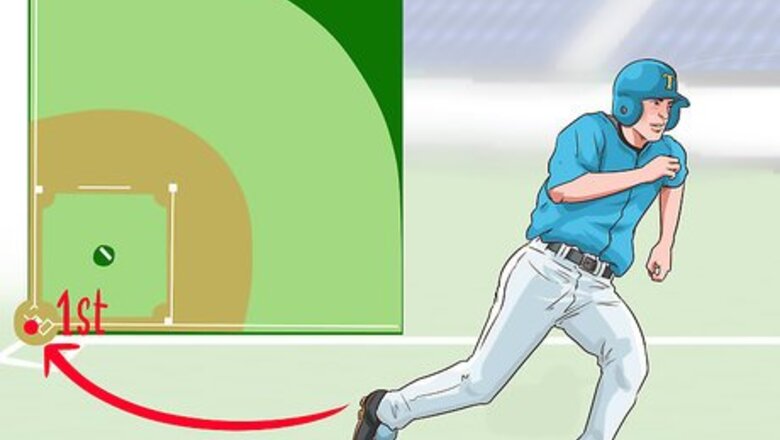
views
Starting Strong
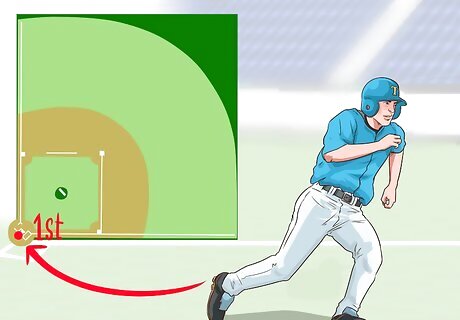
Lead off with someone fast. Fill your first slot with one of your three best hitters. To decide between them, prioritize speed on the ground over power at bat. Save the guy who hits the most home runs for when bases are loaded. But don’t choose a weak hitter just because he happens to be the fastest runner, because your lead-off is likely to come up to bat the most often! Look for these strengths to determine who should fill the #1 spot: Speed Bunting Stealing bases Gets to base often Makes regular contact with the ball Rarely strikes out
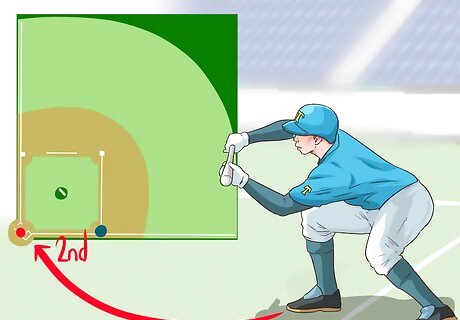
Fill the #2 spot with someone reliable. Again, choose between one of your three best hitters. Since the fastest of the three has already been picked as #1, decide between the two remaining. Choose the one who delivers the most consistent performance, rather than the most powerful hits, to ensure that your lead-off has a chance to make it to second or third base. Pick the player who is best at: Sacrifice bunts Hit-and-runs Getting on base
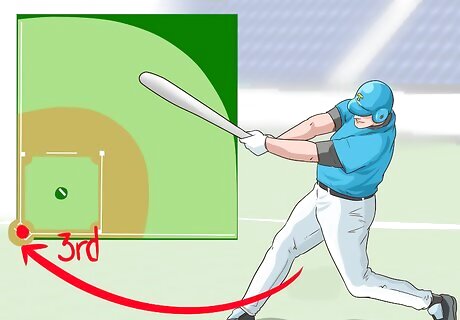
Place the last of your top three in the #3 slot. Bring your #1 and #2 hitters home (or at least closer to it) by selecting your best all-around hitter to bat right after them. Base your decision on both power and consistency. Pick the player who is able to send balls the farthest into the outfield. However, prioritize a high batting average over pure power. If this means loading all three bases instead of driving #1 all the way home, go with that. Your #3 hitter should ideally: Be comfortable hitting all sorts of pitches. Have a high rate of runs batted in (RBI). Be able to hit home runs and doubles occasionally, if not often. Have a high batting average.

Reconsider your #2 and #3 picks. Note whoever begins as your second hitter is likely to come to bat more often. Be aware that some people consider this to mean that it is wiser to bump your #3 pick (who is your best overall hitter) up one slot. Consider whether or not you wish to do the same.
Filling Out the Middle with Power Hitters
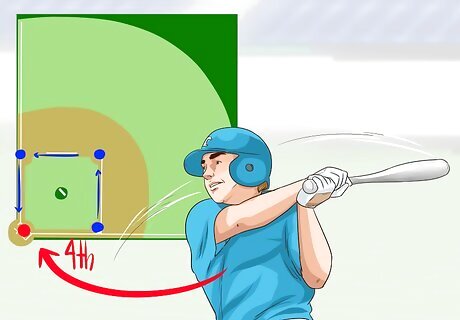
Pick your most powerful hitter for #4. This position is known as the “cleanup,” so choose the player who is most likely to do just that: clean those bases of runners. Pick whoever is most likely to hit home-runs or, failing that, to send the ball way, way out into the outfield. Force your opponents’ defense to waste time chasing after it and passing it back to the infield. Give your #1, #2, and #3 hitters as much time as possible to reach home.
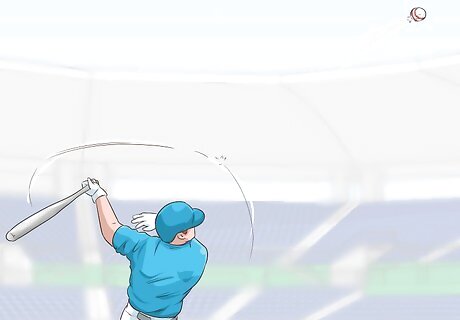
Fill the fifth spot with your second-best clean-up. Since they may have a less than perfect batting average, expect your #4 hitter to strike out on occasion. When they do, follow them up with the next best power hitter. Give your first three hitters another chance to make it to home plate. Or, if #4 was successful at bat, give them a chance to reach the next base, too.

Reconsider your picks for #3, #4, and #5. Understand that the traditional method of making a lineup is to use your very best hitters for the first three spots and then fill out the remaining slots with your fourth-best hitter, then your fifth, sixth, and so on. However, be aware that there is some debate about this. Consider this: Because the #3 hitter is likely to come up to bat more often in one game than #4 and #5 will, the traditional logic holds that you are better off filling that position with the power-hitter who has the highest batting average. However, even though #4 and #5 may have fewer opportunities to bat in one game, they are more likely to do so with more than one base loaded. Because of this, some people believe that the smarter move is to reserve the more consistent hitter for the fourth or fifth hole.
Rounding Out the Lineup

Evaluate your remaining players. You may have a solid team of players who are very close to each other in terms of talent, or the dropoff in batting skills may be very apparent from player to player. Either way, review each player’s strengths and weaknesses as a hitter. Weigh these concerns against what you are likely to need most from a given hole at the bottom of your lineup. Traditionally, #6 through 9 is usually determined by the remaining players’ respective talent and placing them in descending order, with your worst hitter going last.
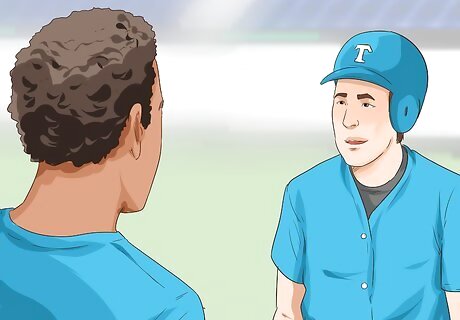
Choose your next best hitters for #6 and #7. Unless you are blessed with an all-star team of power hitters, expect your remaining players to be more proficient at only hitting singles. So, in the event that both your first- and second-pick cleanups strike out, fill out the next two slots according to who has the best record of hitting the ball. Improve your odds of bringing baserunners home while your team is still at bat. If your sixth and seventh best players are pretty close in performance levels, base your decision on who is better at stealing bases. Filling the #6 spot with a strong base-stealer will increase your chances of driving this baserunner closer and closer to home, even if #7, #8, and #9 can only hit singles.
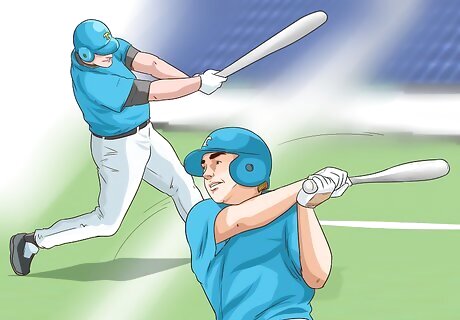
Decide who should be #8 and #9. Now that you are down to your two worst hitters, figure out where you want to place the absolute worst. Consider the dropoff in talent across the middle of your lineup. Figure out what situations you are likely to face as the batting rotation nears its bottom. If you have a strong team who can reach the bottom of the lineup with only one out, perhaps stick to the traditional method of placing your worst hitter last. This way, if they strike out, they will be immediately followed by one of your best players. If you expect to have two or more outs well before that, think of your eighth and ninth hitter in terms of your first and second. Since they may likely be starting the rotation next inning, pick who goes first according the same criteria that you used to pick your lead-off.
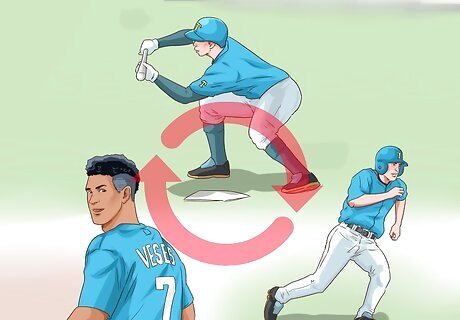
Consider altering the lineup based on your opposition. Research the other team's pitchers. Review any past games that you may have played against them. Consider switching your batters to different holes in your lineup if you think this will give you an advantage. For example: If you have a fairly even number of left- and right-handed batters, alternate between the two to pose a constant challenge. If their pitcher is left-handed, reevaluate each batter's performance against such pitchers. Review each batter's past performances against individual pitchers. For example, if your sixth-best batter overall happens to fare better against one pitcher, consider bumping them up.
















Comments
0 comment